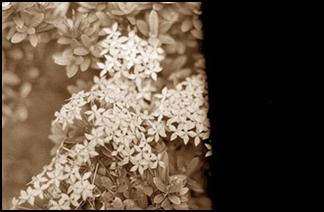ZorkiKat
ЗоркийК&
- Local time
- 10:43 AM
- Joined
- Jan 26, 2006
- Messages
- 2,070
Lee, can you remember the shutter speed setting which gave you a COMPLETE frame? How about those which gave partial exposures?
Sounds that what you have is a shutter which partially caps at some speeds and totally caps at others. This results from improper tensioning or loss of lubrication. The former is the usual culprit. This happens when the first curtain -the blind which moves first when you press the release button- moves slower than it should, and the second curtain would catch up and close the gap before the exposure is even completed, or even initiated. This explains why you have partial or totally blank frames.
If you get a half-frame exposure, it means that the first shutter blind is only fast enough to travel halfway before the second (closing blind) catches up and closes the gap, allowing no exposure to take place on the rest of the frame. At faster shutter speeds like 1/200 or 1/500, the gap is effectively closed before the shutter can even start its traverse.
The usual cure for the usual suspect is adjusting the tension. This can easily be done if you have some skill in tinkering with small precision machines. Tensioning is tested at 1/30 (1/25?) or 1/60 (1/50?), and then 1/500. If the shutter opens, ie, the slit remains open at a consistent size during its traverse at these speeds, the tensioning will be correct.
To explain further, please see here:
http://jay.fedka.com/index_files/Page389.htm
http://jay.fedka.com/index_files/Page510.htm
As you can see, the shutter can only be fully observed (and adjusted) after some disassembly. A bottom loading camera like the Zorki 2S will not allow proper assessment of its shutter activity without being taken apart.
Sounds that what you have is a shutter which partially caps at some speeds and totally caps at others. This results from improper tensioning or loss of lubrication. The former is the usual culprit. This happens when the first curtain -the blind which moves first when you press the release button- moves slower than it should, and the second curtain would catch up and close the gap before the exposure is even completed, or even initiated. This explains why you have partial or totally blank frames.
If you get a half-frame exposure, it means that the first shutter blind is only fast enough to travel halfway before the second (closing blind) catches up and closes the gap, allowing no exposure to take place on the rest of the frame. At faster shutter speeds like 1/200 or 1/500, the gap is effectively closed before the shutter can even start its traverse.
The usual cure for the usual suspect is adjusting the tension. This can easily be done if you have some skill in tinkering with small precision machines. Tensioning is tested at 1/30 (1/25?) or 1/60 (1/50?), and then 1/500. If the shutter opens, ie, the slit remains open at a consistent size during its traverse at these speeds, the tensioning will be correct.
To explain further, please see here:
http://jay.fedka.com/index_files/Page389.htm
http://jay.fedka.com/index_files/Page510.htm
As you can see, the shutter can only be fully observed (and adjusted) after some disassembly. A bottom loading camera like the Zorki 2S will not allow proper assessment of its shutter activity without being taken apart.





